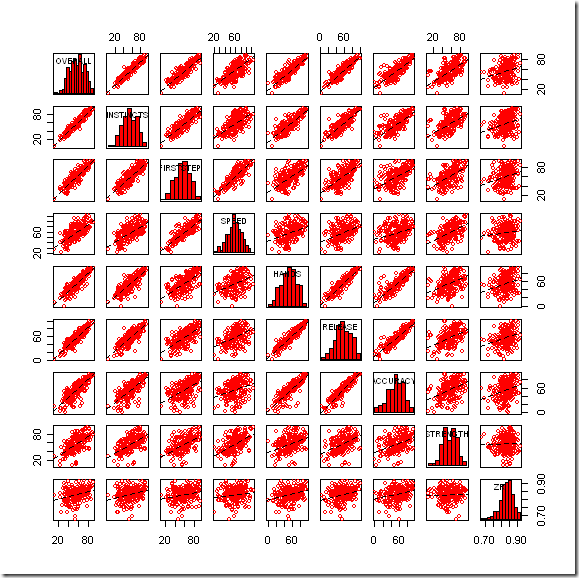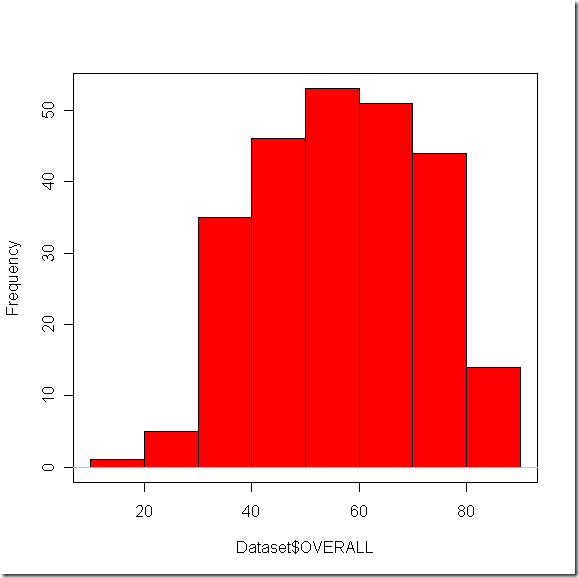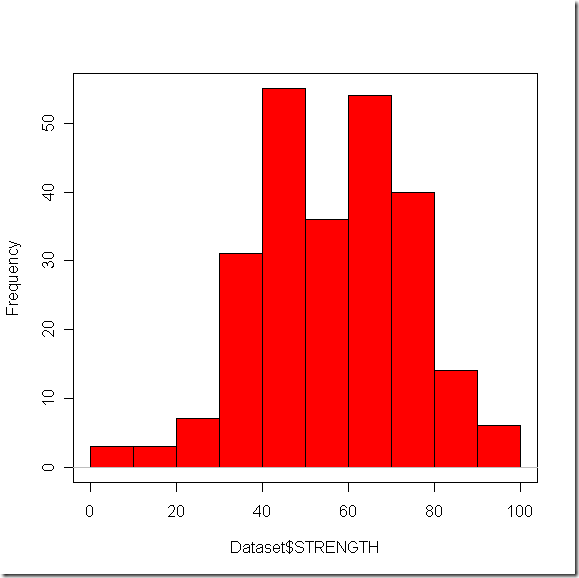What’s a shortstop made of?
0 Comments Published by Colin Wyers on Sunday, June 22, 2008 at 2:15 PM.UPDATE: Please to disregard this for now. I've discovered an issue with the IDs in the zone rating database. I'm working on fixing the issue, but until then, this is fraught with issues. My sincerest apologies for the error.
Tango’s Fan Scouting Report tells us something that we can’t tell from the stats alone – what physical tools and skills a player has. But does that tell us anything meaningful? I hooked up the Fan Scouting Report to a database of STATS, Inc. zone rating. (Shamefully, I eliminated all players with fewer than 30 in zone chances.)
I want to note right off the bat that I'm puttering here, just poking the data with a stick. Do not take this as gospel.
Here's a set of scatterplots between each of the individual tools assessed and zone rating:
I’ll also present the correlations – the dotted lines, if you were wondering – as a table:
OVERALL | INSTINCTS | FIRSTSTEP | SPEED | HANDS | RELEASE | ACCURACY | STRENGTH | ZR | |
OVERALL | 1.000 | 0.953 | 0.898 | 0.706 | 0.885 | 0.905 | 0.817 | 0.651 | 0.280 |
INSTINCTS | 0.953 | 1.000 | 0.856 | 0.626 | 0.838 | 0.850 | 0.741 | 0.580 | 0.288 |
FIRSTSTEP | 0.898 | 0.856 | 1.000 | 0.846 | 0.660 | 0.674 | 0.551 | 0.576 | 0.250 |
SPEED | 0.706 | 0.626 | 0.846 | 1.000 | 0.402 | 0.424 | 0.306 | 0.522 | 0.137 |
HANDS | 0.885 | 0.838 | 0.660 | 0.402 | 1.000 | 0.931 | 0.869 | 0.411 | 0.286 |
RELEASE | 0.905 | 0.850 | 0.674 | 0.424 | 0.931 | 1.000 | 0.920 | 0.468 | 0.299 |
ACCURACY | 0.817 | 0.741 | 0.551 | 0.306 | 0.869 | 0.920 | 1.000 | 0.424 | 0.289 |
STRENGTH | 0.651 | 0.580 | 0.576 | 0.522 | 0.411 | 0.468 | 0.424 | 1.000 | 0.024 |
ZR | 0.280 | 0.288 | 0.250 | 0.137 | 0.286 | 0.299 | 0.289 | 0.024 | 1.000 |
Arm strength doesn’t seem to correlate well with zone rating – in fact it has the lowest correlation of any of the tools - which surprised me at first. It doesn’t make sense that having a better arm doesn’t make you a better shortstop. But before you go throwing out the analysis as piece of lunacy, give me a second.
In the center is a histogram of each graph. We’ll go ahead and zoom in for a detail. First, overall (average of all tools):
It tilts just a shade to the right, but for our sample it seems to do a pretty good job of fitting to a standard “bell curve” shape. Now, look at the histogram for arm strength:
See how it bunches together? (Unfortunately, R takes the number of groups in a histogram as a suggestion rather than as a hard-and-fast rule, or the graphs would be a little easier to compare.)
If we were to look at how well all baseball players did defensively at shortstop, we’d likely find that arm strength matters a great deal. But looking at players selected to play shortstop, it’s a different story; anyone who doesn’t have the arm for the position has been weeded out, and knowing a player’s arm strength gives us little additional information.
Of course, we’re barely scratching the surface with this. More reading is available here and here, for starters.
Labels: Defense
How good of a shortstop is a second baseman?
4 Comments Published by Colin Wyers on Friday, June 20, 2008 at 10:54 AM.UPDATE: Please to disregard this for now. I've discovered an issue with the IDs in the zone rating database. I'm working on fixing the issue, but until then, this is fraught with issues. My sincerest apologies for the error.
I’ve been doing a lot of thinking about replacement level and positional adjustments recently; about the only thing I learned from that was that Gary Gaetti was the biggest free agent bargain of the past 20 years. That’s not very useful, I know.
But it got me thinking about the relative value of different positions. Consider this table, based off of Chris Dial’s excellent work:
| POS | LG_ZR | ZR_CH | ZR_RUNS |
| 1B | .844 | 281 | .798 |
| 2B | .825 | 507 | .754 |
| 3B | .753 | 430 | .800 |
| SS | .843 | 532 | .753 |
| LF | .868 | 348 | .831 |
| CF | .884 | 462 | .842 |
| RF | .872 | 365 | .843 |
Lemme ‘splain – LG_ZR is the average zone rating (plays divided by chances) at the position. [I derived those values from SG’s zone rating database; everything else in the table is straight from Dial.] ZR_CH is the average number of chances in a season at the position. ZR_RUNS is the average value in runs at the position.
Each of those measures different things; Zone Rating itself measures the difficulty of making a play. Chances and runs, on the other hand measures leverage of that skill. Tango has done some great work in this area in the past, but at the runs level. That's fine for measuring value, but I'm going to look at it from a different perspective.
Right now, all I have is data for players who were at both second and short for the same team in the same season. (Well, at least, that's all the data I've looked at and processed.) Here’s the data, if you're interested.
Here's what I did - I took a weighted average of each player's numbers (plays made and chances) at each position, using the number of chances as the weight. For all players, the number of chances used as the weight comes from the position where the player had the fewest number of chances. Then, I calculated zone rating from the weighted averages. (From here on out, when I say average I'm referring to a weighted average, except for the league average.)
The average zone rating of a shortstop in our sample pool is .836, compared to .843 for the league. So the players that play both positions tend to be below-average shortstops. Makes sense, right? For second basemen, it's .827, compared to .825 for league. So second basemen who play shortstop are (slightly) above-average second basemen, according to our sample. Again, this makes sense, but the difference is small enough that it's probably not worth considering.
Now, here's the conclusion that doesn't seem to make sense on the face of it: players in our sample pool are making more plays per opportunity at shortstop, compared to second base. All this means is that, for a shortstop, it's easier to make a play on a ball at short than it is to make a play on a ball at second.
There is a selective sampling issue here: the players in our pool, by and large, have the physical tools to play shortstop; there are many second basemen who don't posses those tools, which largely comes down to arm strength. From any of the available data - zone rating, Retrosheet play-by-play, etc. - it's, as far as I can tell, impossible to tell who those players are. [We do have that data available from Tango's Fan Scouting Report. That's the next obvious avenue of approach for studying this issue.]
I also split my sample into two groups - players that played mostly at shortstop and players that played mostly at second base. There wasn't a large difference between the two groups that I noticed.
The difference between the average second baseman playing shortstop (which is pretty close to the average second baseman overall) is about four plays or three runs over a full season. Again - this is for players who teams selected based on their ability to play shortstop. The difference between our shortstops-at-second and the league second baseman was only one play; bear in mind that these are below-average shortstops to begin with.
My hunch is that the best way to do a conversion factor for a player, assuming that he's able to play shortstop at all, is to use a multiplier to convert plays per chance between positions. I'll have to look into that - and, again, the next step is to look at physical tools using the Fan's Scouting Report.
Labels: Defense
Team Defense in the NL, Season to Date
0 Comments Published by Colin Wyers on Sunday, June 8, 2008 at 1:14 AM.I've been away for a while, mostly working on stuff for GROTA. I do a lot of stuff with Zone Rating in a post there recently, mostly having to do with how the Cubs line up defensively. But to get there, I had to figure out +/- ratings for every player in the NL. Funny how that works out, huh. You can find that data on EditGrid, as usual.
But, as an added bonus, here are the totals by team for everyone in the NL:
| STL | 32.93151 |
| ATL | 17.72968 |
| SD | 16.24524 |
| HOU | 14.94331 |
| LAN | 13.56041 |
| PHI | 9.173859 |
| CHN | 6.625689 |
| WAS | 1.453572 |
| NYN | -1.26417 |
| MIL | -3.81383 |
| ARI | -5.69194 |
| COL | -8.97945 |
| CIN | -10.5495 |
| SF | -20.3379 |
| FLA | -30.6143 |
| PIT | -31.4122 |
If you're wondering where St. Louis' out-of-nowhere pitching performance has come from, well, there you go. The Brewers really are an upgraded team on defense. The Reds are not. I'll confess I find the Marlins surprising, given that Hanley Ramirez picked this season to start being an average defensive shortstop. (We'll see how long that lasts, won't we.)


